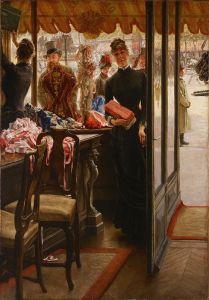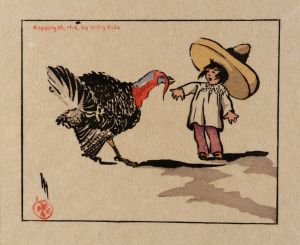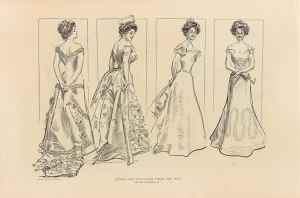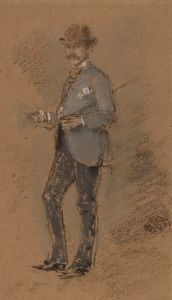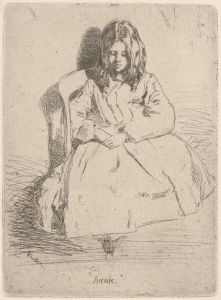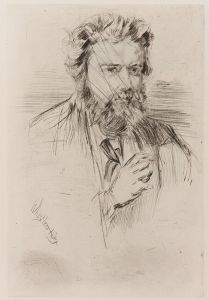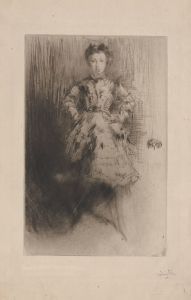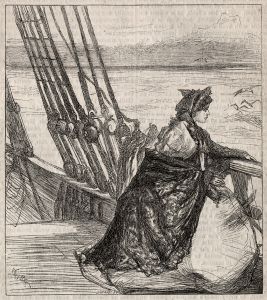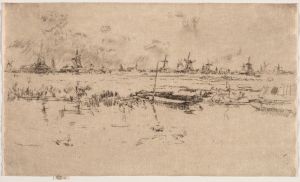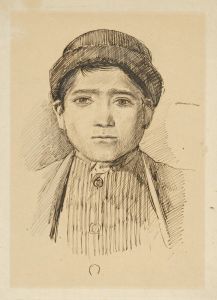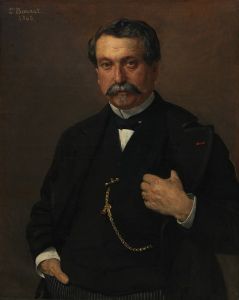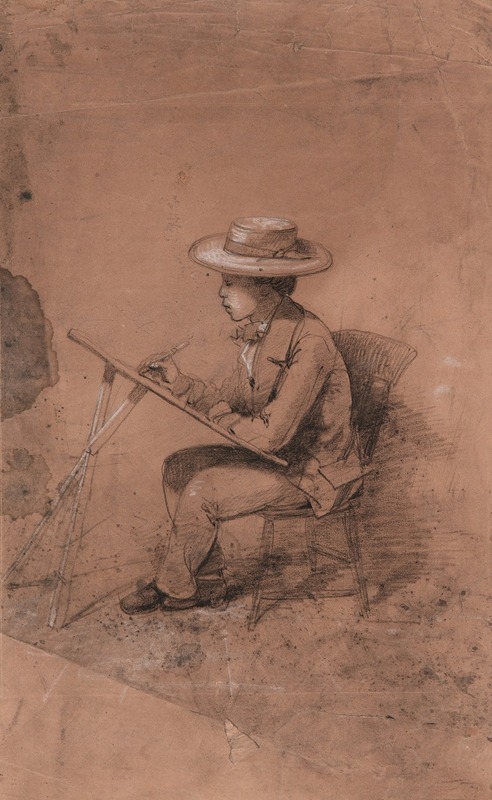
Portrait of John Ross Key
A hand-painted replica of James Abbott McNeill Whistler’s masterpiece Portrait of John Ross Key, meticulously crafted by professional artists to capture the true essence of the original. Each piece is created with museum-quality canvas and rare mineral pigments, carefully painted by experienced artists with delicate brushstrokes and rich, layered colors to perfectly recreate the texture of the original artwork. Unlike machine-printed reproductions, this hand-painted version brings the painting to life, infused with the artist’s emotions and skill in every stroke. Whether for personal collection or home decoration, it instantly elevates the artistic atmosphere of any space.
James Abbott McNeill Whistler, an influential American artist, is renowned for his contributions to the art world during the late 19th century. Among his many works, the "Portrait of John Ross Key" stands out as a testament to his skill in portraiture. Whistler, known for his innovative approach and distinctive style, often focused on capturing the essence and character of his subjects, rather than merely their physical likeness.
John Ross Key, the subject of this portrait, was an American artist and the grandson of Francis Scott Key, the author of "The Star-Spangled Banner." John Ross Key himself was known for his landscape paintings and his work as a topographical artist during the American Civil War. The connection between Whistler and Key likely stemmed from their mutual involvement in the art world and possibly through social circles that included artists and patrons of the arts.
Whistler's approach to portraiture was heavily influenced by his belief in "art for art's sake," a philosophy that emphasized the aesthetic experience over narrative content or moral lessons. This perspective is evident in the "Portrait of John Ross Key," where Whistler's focus is on the composition, use of color, and the interplay of light and shadow. Whistler often employed a limited palette and subtle tonal variations to create a harmonious and balanced composition, which can be seen in this portrait.
The painting is characterized by Whistler's signature style, which often included a subdued color scheme and a focus on the sitter's expression and posture. Whistler was known for his ability to convey the personality and mood of his subjects through minimalistic yet expressive brushwork. In the "Portrait of John Ross Key," Whistler likely employed these techniques to capture Key's character and presence.
Whistler's portraits are also notable for their atmospheric quality, achieved through his use of soft, diffused lighting and a delicate handling of paint. This technique creates a sense of intimacy and immediacy, drawing the viewer into the world of the sitter. The "Portrait of John Ross Key" would have exemplified these qualities, showcasing Whistler's mastery in creating a compelling and evocative image.
While specific details about the creation and current location of the "Portrait of John Ross Key" are not widely documented, Whistler's broader body of work continues to be celebrated for its innovation and influence on both American and European art. His portraits, in particular, remain significant for their departure from traditional portraiture and their emphasis on mood and aesthetic harmony.
In summary, the "Portrait of John Ross Key" by James Abbott McNeill Whistler is a reflection of the artist's unique approach to portraiture, characterized by its focus on aesthetic beauty and the subtle depiction of the sitter's personality. Whistler's work in this genre has left a lasting impact on the art world, highlighting his role as a pivotal figure in the transition to modern art.





